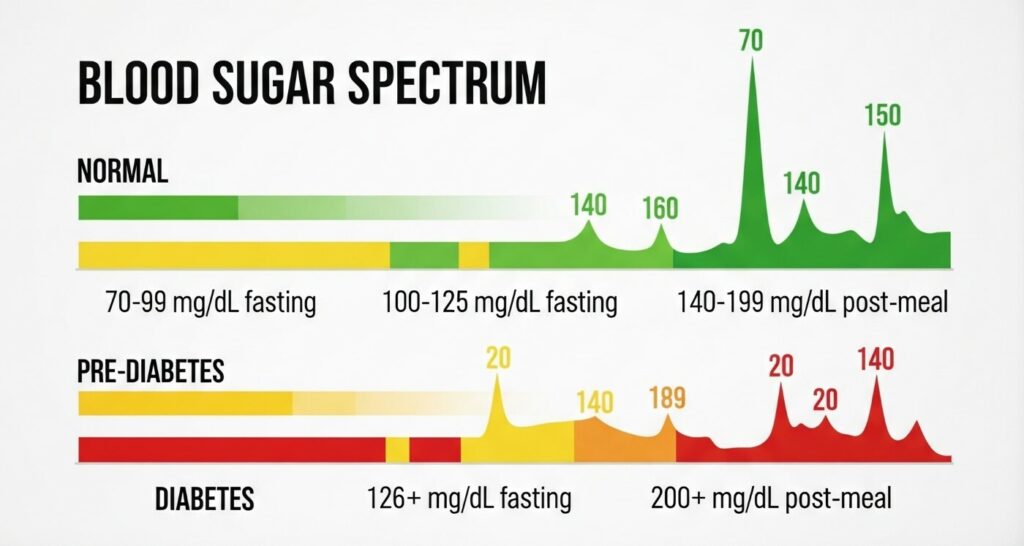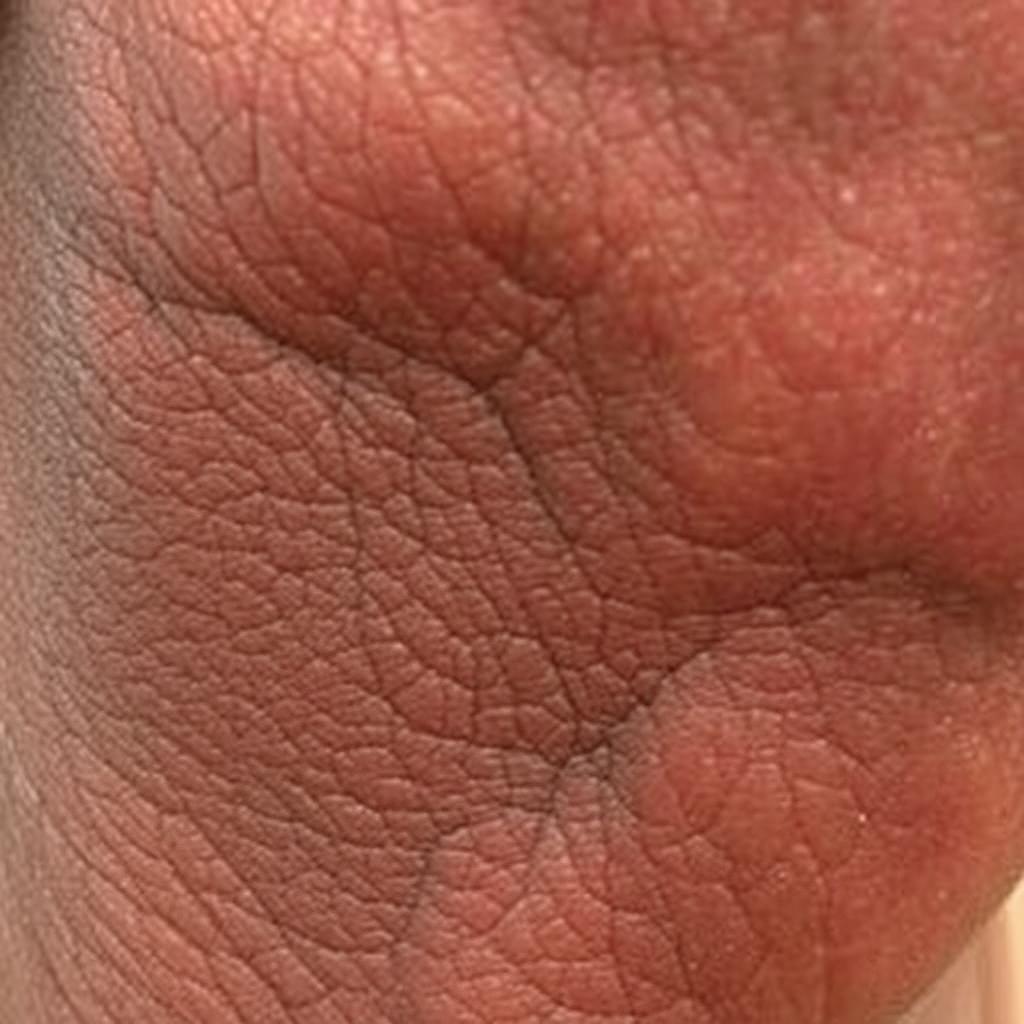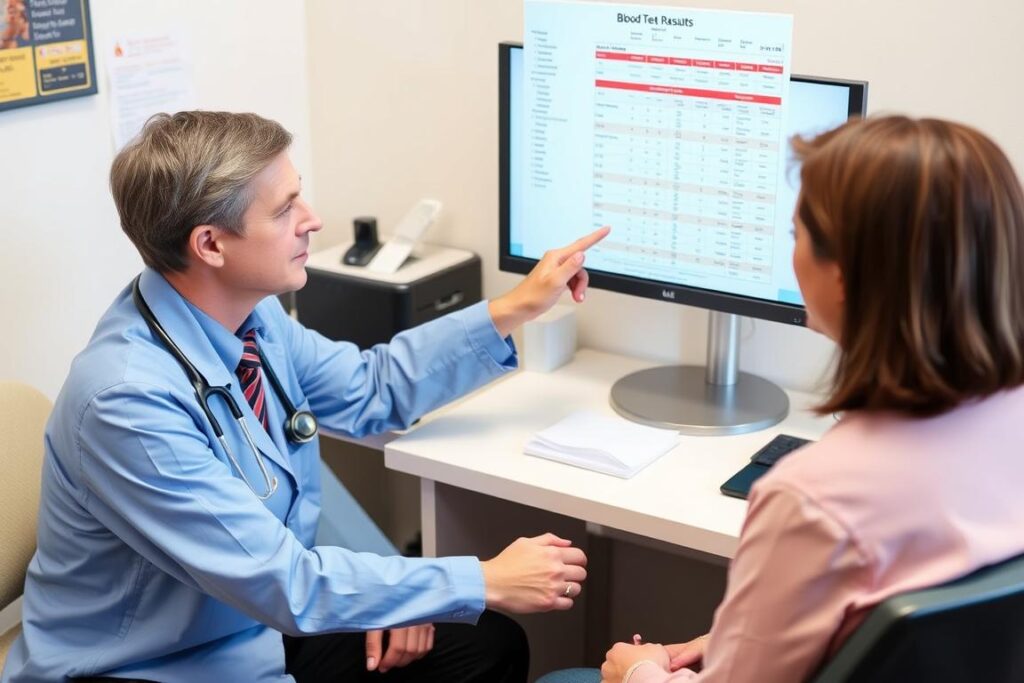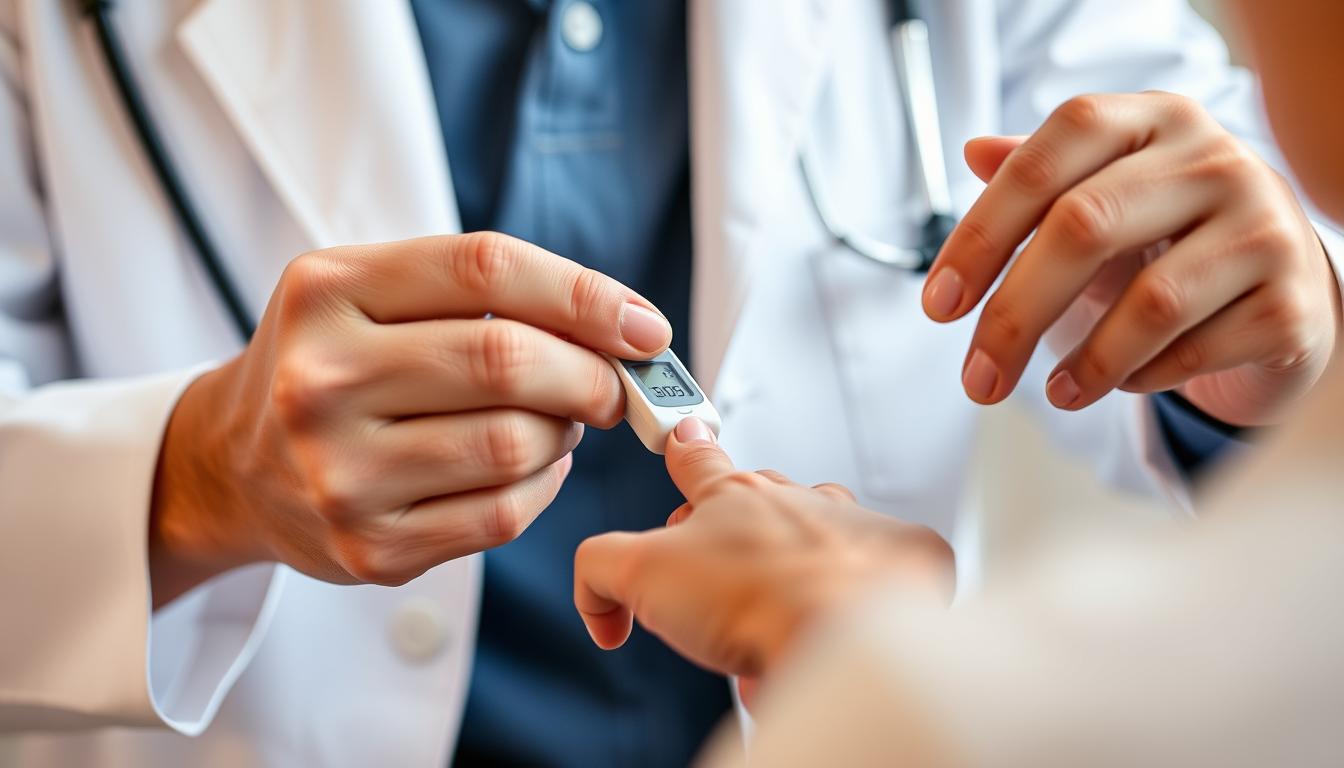Prediabetes is a warning sign that your body’s relationship with blood sugar is changing. It represents a critical window where you can take action to prevent type 2 diabetes. With over 84 million American adults having prediabetes and more than 80% unaware of their condition, understanding this reversible metabolic state has never been more important.
What Is Prediabetes?
Prediabetes happens when your blood sugar levels are higher than normal but not high enough to be diagnosed as type 2 diabetes. It’s essentially your body’s way of warning you that your glucose metabolism is off track.
Healthy blood sugar levels typically range from 70 to 99 milligrams per deciliter (mg/dL). With prediabetes, your fasting blood sugar levels fall between 100 to 125 mg/dL, or your A1C test results show 5.7% to 6.4%.
The good news? This condition is reversible with timely intervention. Think of prediabetes as a fork in the road – one path leads to diabetes, while the other leads back to health.

Don’t Wait Until It’s Too Late
Early detection of prediabetes gives you the power to prevent type 2 diabetes. Schedule a screening with your healthcare provider today.
Prediabetes: A Growing Health Concern
The statistics surrounding prediabetes are alarming:
Prevalence
- More than 1 in 3 American adults have prediabetes
- Over 84 million adults in the U.S. are affected
- Half of adults over 65 have prediabetes
- More than 80% of people with prediabetes don’t know they have it
Progression Risk
- For people 45 years old with prediabetes, the 10-year risk of developing Type 2 diabetes is 9% to 14%
- Without intervention, many people with prediabetes will develop type 2 diabetes within 5 years
- Even before diabetes develops, prediabetes can cause damage to your heart, blood vessels, and kidneys

Are You at Risk for Prediabetes?
Several factors can increase your likelihood of developing prediabetes. Understanding these risk factors is the first step toward prevention.
Lifestyle Factors
- Being physically inactive (less than 3 times a week)
- Having overweight or obesity (BMI greater than 25)
- Smoking
- Poor diet high in processed foods and added sugars
- Chronic stress and lack of quality sleep
Health Conditions
- High blood pressure
- High cholesterol
- History of gestational diabetes
- Polycystic ovarian syndrome (PCOS)
- Obstructive sleep apnea
Unchangeable Factors
- Being 45 years or older
- Family history of type 2 diabetes
- Race/ethnicity (higher risk for Black, Hispanic/Latino, Native American, Pacific Islander, and Asian American individuals)

Know Your Risk
Take our quick assessment to determine your risk level for prediabetes and receive personalized prevention recommendations.
Recognizing Prediabetes: Early Warning Signs
Most people with prediabetes don’t experience noticeable symptoms, which is why it often goes undiagnosed. However, some people may notice subtle changes that could signal elevated blood sugar levels.
Possible Prediabetes Symptoms
- Darkened skin in your armpit or back and sides of your neck (acanthosis nigricans)
- Skin tags
- Increased thirst
- Frequent urination
- Unusual fatigue
- Blurry vision

Important: The absence of symptoms doesn’t mean you’re in the clear. The only reliable way to detect prediabetes is through blood testing. Regular screenings are essential, especially if you have risk factors.
How Prediabetes Is Diagnosed
Healthcare providers rely on several blood tests to diagnose prediabetes. These tests measure how well your body processes glucose.
| Test | Normal Range | Prediabetes Range | Diabetes Range |
| Fasting Plasma Glucose | Less than 100 mg/dL | 100-125 mg/dL | 126 mg/dL or higher |
| A1C Test | Below 5.7% | 5.7%-6.4% | 6.5% or higher |
| Oral Glucose Tolerance Test | Less than 140 mg/dL | 140-199 mg/dL | 200 mg/dL or higher |

Prediabetes Prevention Strategies
The good news about prediabetes is that it’s reversible. With the right approach, you can bring your blood sugar levels back to normal and significantly reduce your risk of developing type 2 diabetes.
Lifestyle Modifications That Make a Difference
Healthy Eating

- Choose whole grains over processed carbs
- Increase fiber intake through vegetables, fruits, and legumes
- Limit added sugars and sweetened beverages
- Choose healthy fats (olive oil, nuts, avocados)
- Practice portion control
Regular Physical Activity

- Aim for 150 minutes of moderate activity weekly
- Include both aerobic exercise and strength training
- Start slowly and build up gradually
- Find activities you enjoy to stay consistent
- Break up sitting time with short activity breaks
Weight Management
- Losing just 5-7% of body weight can reduce diabetes risk by up to 58%
- Focus on sustainable changes rather than quick fixes
- Track progress with measurements beyond the scale
- Celebrate non-weight victories (better sleep, more energy)
Additional Prevention Strategies
Stress Management
- Practice mindfulness or meditation
- Get adequate sleep (7-9 hours nightly)
- Try yoga or tai chi
- Spend time in nature
- Connect with supportive people
Habit Formation
- Set specific, achievable goals
- Track your progress
- Find an accountability partner
- Create environmental cues for healthy choices
- Practice self-compassion when setbacks occur

“Small changes can have a big impact. Studies show that losing just 7% of your body weight and getting 150 minutes of physical activity a week can reduce the risk of developing type 2 diabetes by 58% in people with prediabetes.”
Medical Approaches to Prediabetes Management
While lifestyle changes are the cornerstone of prediabetes management, your healthcare provider might recommend additional interventions in certain cases.
Medications
For people at high risk of developing type 2 diabetes, especially those who haven’t seen improvement with lifestyle changes alone, medications may be prescribed:
- Metformin – The most commonly prescribed medication for prediabetes
- Acarbose – Helps slow the digestion of carbohydrates
These medications are typically considered when you have multiple risk factors or when blood sugar levels remain elevated despite lifestyle changes.

Remember: Medications are not a substitute for healthy lifestyle changes. They work best when combined with proper diet, regular physical activity, and weight management.
Assessing Your Prediabetes Risk
Taking proactive steps to assess your risk is crucial for early intervention. Here are practical ways to determine if you might have prediabetes:
Talk to Your Doctor
- Discuss your risk factors
- Request appropriate blood tests
- Review your family medical history
- Ask about screening frequency based on your risk level
Complete a Risk Assessment
- Use online prediabetes risk tests
- Answer questions about your lifestyle and health history
- Calculate your BMI
- Measure your waist circumference
Monitor for Warning Signs
- Pay attention to unusual thirst or hunger
- Note any unexplained fatigue
- Watch for skin changes (darkening in skin folds)
- Track changes in vision or healing time

Your Critical Window of Opportunity
Prediabetes represents a critical window of opportunity – a chance to take control of your health before more serious problems develop. This is your body giving you an early warning signal that shouldn’t be ignored.
“Prediabetes is not a destination; it’s a detour. With the right map and determination, you can find your way back to better health.”
Why Act Now?
- Prediabetes is reversible, but type 2 diabetes complications often aren’t
- Early intervention prevents damage to your heart, kidneys, eyes, and nerves
- The longer you wait, the harder it becomes to restore normal blood sugar levels
- Small changes now can prevent major health challenges later

Remember: Every step you take toward healthier blood sugar levels matters. You don’t have to make perfect changes – consistent small improvements add up to significant health benefits over time.
Taking the First Step
Prediabetes doesn’t have to lead to type 2 diabetes. With awareness, early detection, and proactive management, you can reverse course and reclaim your health. The power to change your health trajectory is in your hands.
Start by assessing your risk, talking to your healthcare provider about appropriate screenings, and implementing sustainable lifestyle changes. Remember that you’re not alone on this journey – healthcare professionals, support groups, and prevention programs are available to help you succeed.

Your Health Journey Begins Today
Don’t wait until prediabetes progresses to type 2 diabetes. Take advantage of this critical window for prevention and start your journey toward better health.


